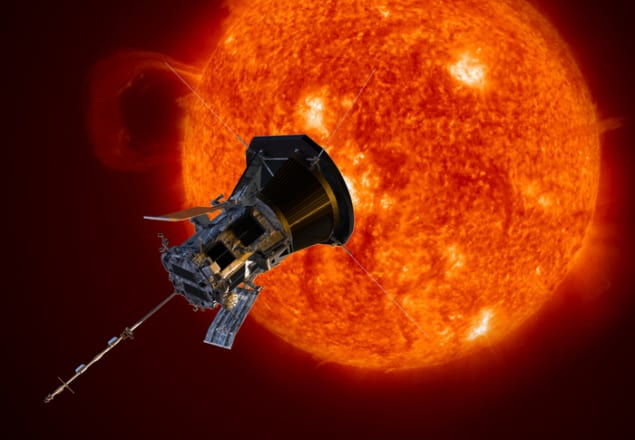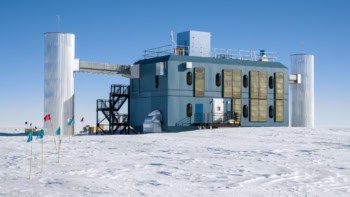
A close analysis of data from NASA’s Parker Solar Probe has revealed that electromagnetic “whistler waves” – so named because early radio operators mistook these eerie, descending sounds for a person whistling – are unexpectedly absent from certain regions of the Sun’s upper atmosphere. The discovery could lead to a better understanding of the physics of the solar wind, and thus to more accurate predictions of space weather and how it might affect us here on Earth.
The solar wind is a stream of energetic, charged particles – mostly electrons and protons – ejected from the Sun’s upper atmosphere, or corona, in all directions. Learning more about the dynamics of the solar wind is important because these charged particles perturb the Earth’s magnetic field when they collide with it. Such perturbations are known as space weather, and they can damage satellites, impact communications technologies and GPS signals, and even cause power outages on the ground at high latitudes.
Corona heating
The Parker Solar Probe was launched in 2018 with a mission to learn more about the solar corona and how heat moves through it. In the latest study, Cynthia Cattell and colleagues at the University of Minnesota Twin Cities in the US performed a statistical analysis of data from all of the probe’s solar “encounters” (as its orbits of the Sun are known) so far, focusing on observations made when the probe was especially close to the Sun.
Previous analyses had revealed that between about 35 solar radii (one solar radius is a little less than 696,000 km) and the Earth’s orbit at 215 solar radii, the solar wind contains “whistler waves”. These electromagnetic waves help regulate the way heat flows from the corona, and they also play an important role in the Van Allen radiation belts that surround the Earth.
Signatures of an ambipolar electric field
In regions closer to the Sun, however, the Minnesota researchers found no evidence of whistler waves. At less than about 30 solar radii, they instead spotted signatures of a different, electrostatic wave. The electrons in the solar wind in this region also showed evidence of being affected by an ambipolar electric field created partly by the Sun’s gravity. This effect is somewhat like the one that occurs near the Earth’s poles, where the solar wind is accelerated, Cattell explains.
The absence of whistlers implies that they cannot be responsible for controlling the heat flux in this region of the solar corona, she adds. “This heat flux is carried by what is called ‘strahl’ (the German word for beam or ray) electrons and the limiting of the heat flux is due to scattering of strahl by the whistlers so it is not a beam anymore,” she tells Physics World. “The whistler electric field rotates in a right-hand sense about the solar wind magnetic field at the same rate as the electrons do. So, electrons moving in a range of speeds see a constant electric field and are accelerated.”
Cattrell thinks the work should help scientists make better predictions of space weather. “If you don’t understand the details of energy flow close to the Sun, then you can’t predict how fast the solar wind will be moving or what its density will be when it reaches Earth,” she notes. “These are some of the properties that determine how solar activity affects us.”

The enduring mystery of the solar corona
Understanding the flow of heat is important also in many other astrophysical settings, including accretion discs, other stellar winds, and the interstellar medium, she adds.
The researchers, who report their work in Astrophysical Journal Letters, say they now hope to better understand why whistler waves are absent so close the Sun, how the electrons accelerated by the gravity-associated electric field might excite other waves and how that, in turn, impacts the solar wind. Meanwhile, Parker’s encounters are getting closer and closer to the Sun. In 2024 it will fly to within 6.08 million kilometres from our star – the closest any spacecraft has ever ventured.



